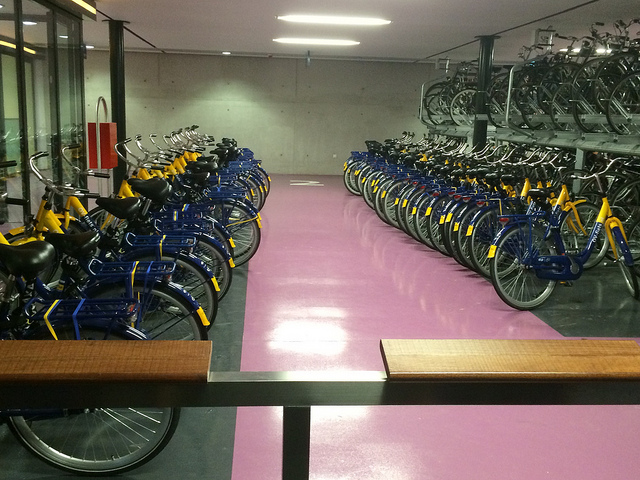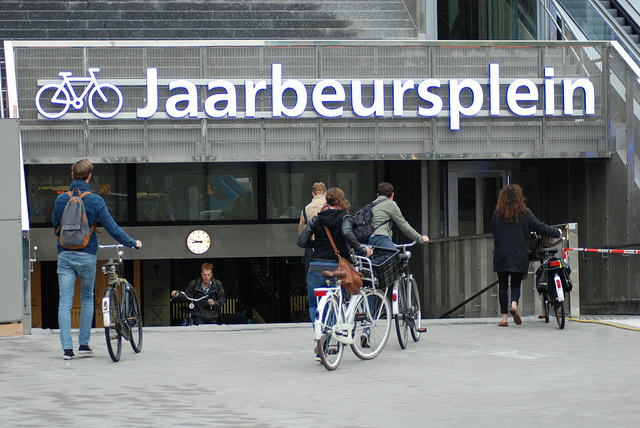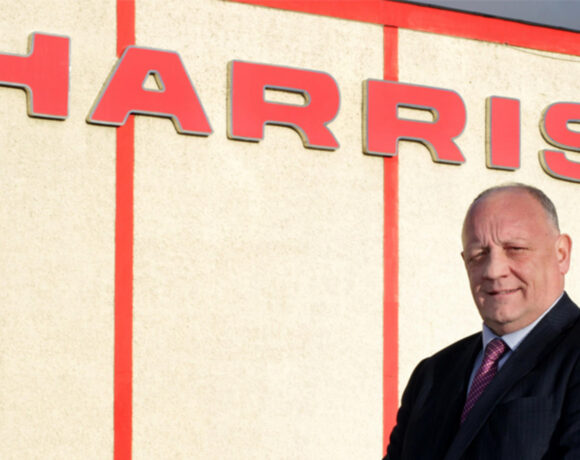As highlighted in our last edition, more and more people are beginning to choose their bicycle as their preferred mode of transportation around the country’s towns and cities. The immediate health benefits for cyclists are obvious, as well as the positive effect on the environment. Choosing to cycle instead of opting to travel by car also plays a vital role in the easing of traffic congestion in and around Ireland’s towns and cities.
With cycling as a mode of travel steadily rising throughout the country and new cycling routes and initiatives being introduced, the issue of high density bicycle parking will soon need to be addressed. A key component of all cycle planning should be parking. It is vital to take into consideration that every bicycle journey starts and finishes with a parked bicycle. Constructing new cycle networks and introducing initiatives are a great step forward , however these alone will not suffice.
One such European initiative that is set to come into operation in the German city of Hamburg intends to dispose of the need for vehicles within the next 20 years. The Hamburg strategy is all part of the “Green Network Plan” that aims to turn Germany’s second largest city into a unique integrated system. Roughly 40% of the city is made up of green areas such as parks and gardens and city officials are looking to tie them together by building more pedestrian and cycle paths.
There are also plans to build new green spaces throughout the city that will be able to absorb CO2 and in doing so be capable of regulating the climate in the city. The average temperature in Hamburg has risen by around 1.2 degrees in the last 60 years. It is hoped that these new green spaces will also help to prevent flooding in the region as the sea level in Hamburg has risen by 20 centimetres in the last 60 years and is predicted to rise by another 30 centimetres by the year 2100.
The new plans for Hamburg are intended to replicate what has already been achieved in places like Copenhagen where cycle paths have been constructed to link together outlying areas to the city centre. The overall aim is to make walking and cycling the more appealing option for Hamburg’s residents and eventually to make vehicles unnecessary in the German city. If the numbers of cyclists in our towns and cities continues to grow there will need to be strategically placed and adequate numbers of secure bicycle racks and parking areas.
If the number of people using bicycles in our major towns and cities doubles, this will mean that the issue of parking for bikes will inevitably become a major priority for councils and local government. This issue has been addressed by Dublin City council recently. They have indicated that they are beginning to examine the possibility of introducing high density bicycle parking in the city in order to keep up with demand from the growing number of commuters and shoppers in the capital who are opting to travel on two wheels.
The council has said that this would be part of their intended plan to reach its target of a 25-30% cycling modal share by the year 2020. The council has employed a company in order to attempt to plan out high density bicycle parking at a number of locations in the city centre. They will do this by mapping and photographing the current public bicycle parking facilities in the city council’s area in order to find improvements. As it stands the parking facilities are primarily made up of on-street bike stands.
They intend to introduce a number of brand new high density parking locations and to upgrade the free off-street cycle parking that holds 192 bicycles at Dublin City Council’s Drury Street Car Park. Other possible locations for the introduction of high density cycle parking include Trinity College, city centre lane-ways, retail quarters and the main tourist quarters throughout the city. The prospect of rejuvenating the underground car park at Central Bank has also been suggested as an ideal location for a high capacity bicycle parking facility.
An example of an ideal way to introduce an innovative form of high density cycle parking can be found in the Dutch city of Utrecht. The authorities intend to provide residents with 22,000 new bicycle spaces around the city’s central train station. The construction of this brand new, large scale bicycle parking facility did take some time to come together due to inevitable challenges that needed to be overcome first.
 22,000 new bicycle spaces have been introduced around Utrecht’s central train station.
22,000 new bicycle spaces have been introduced around Utrecht’s central train station.
The refurbishment of the city’s train station resulted in this brand new underground parking facility for the city’s cyclists being introduced. The parking facility is guarded by security at all times and there is a parking fee involved for each bike, but the first 24 hours are free. The cost for parking is €1.25 for a regular bicycle and €2.25 for a cargo bicycle per day. There are also yearly rates available at a very reasonable rate of €75 for a regular bicycle and €150 for a cargo bicycle.
Each of the racks is equipped with a sensor which users can clock in and out each day using their OV-Chipkaart, which is the Dutch equivalent of the Leap card. The technology involved in the new bike racks is also rather impressive. The sensors on each rack transport information into electronic signs which indicate to users if a certain rack is fully occupied. This will save commuters time and prevent them from having to search through racks unnecessarily.
The signs also indicate how many spaces are left in each rack and this is illuminated in green lighting on the screen above. Each of the levels and racks are numbered and colour coded which makes it easier for people to locate their bicycle during the morning and evening rush hours. As the number of Irish people who are choosing to commute by bicycle increases ever further, it is perhaps time for us to catch up with the rest of Europe and introduce more parking facilities for those who are cycling in and out of our towns and cities.
 Illuminated lighting indicates how many spaces are left in each rack.
Illuminated lighting indicates how many spaces are left in each rack.













